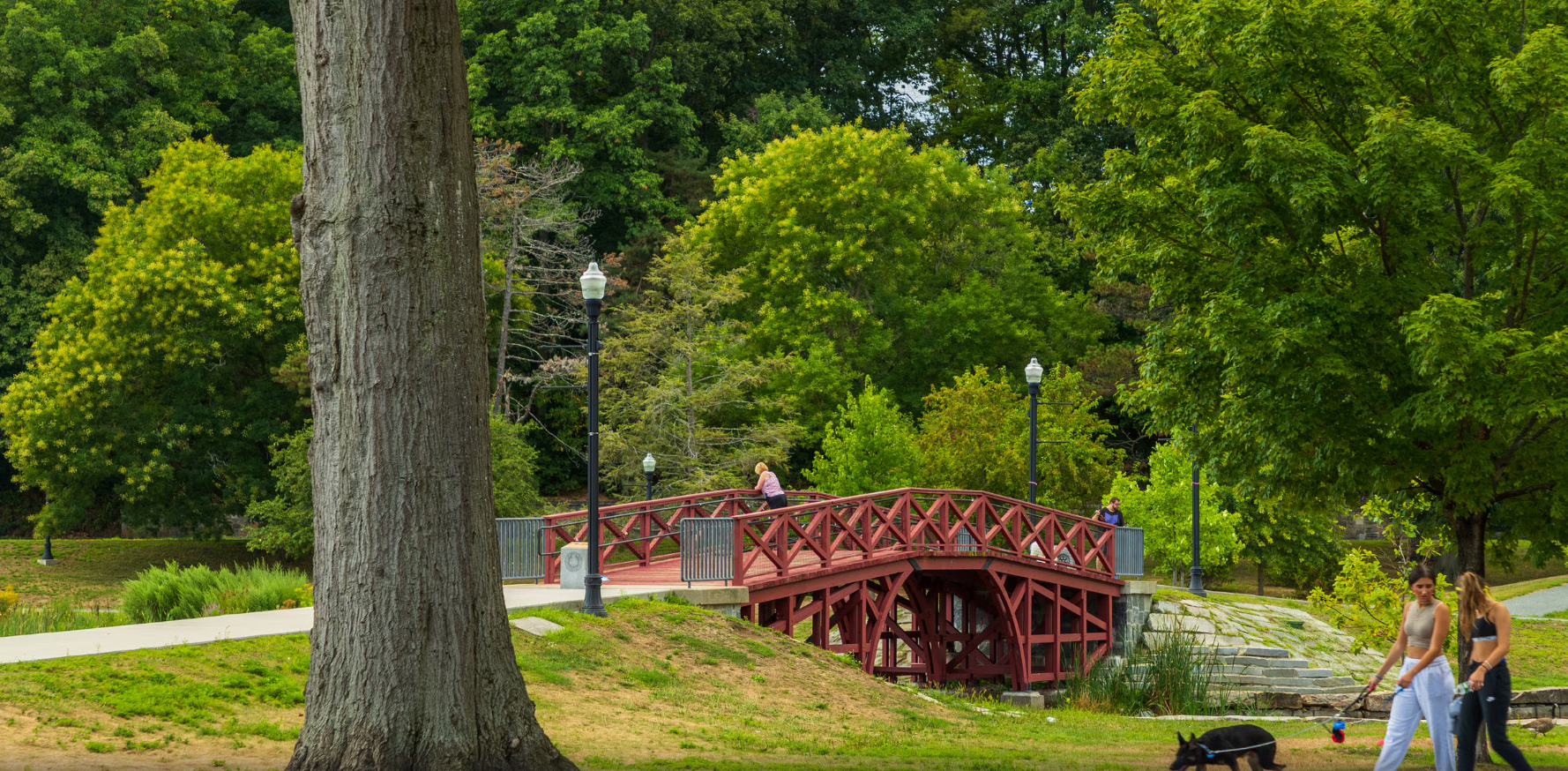Elm Park was purchased for public use in 1854, which makes it one of the oldest parks in the country – but not the oldest! Contrary to what the plaque on the Edward Winslow Lincoln gate on Russell Street, there are a few parks that are a little bit older than Elm.
When the city went to purchase Elm Park, citizens believed that the $11,257 was too much to pay for a ‘swamp on the outskirts of the village.’ The ponds were built in 1873 as a natural drainage for the wetlands. In the early days, the park was just a pasture and dump site, but Worcester’s first parks commission Edward Winslow Lincoln urged the city to develop the park. Newton Hill was added to Elm Park in 1888.
In 1909, Frederick Law Olmstead, landscape of Central Park and the Biltmore Estate, redesigned the park. More recently, 1.9 million dollars was invested from state and local monies to redo the playground, install light poles, benches, and picnic tables, and refurbish the pond walls. The wooden bridge was also rebuilt, named after Myra Kraft.

